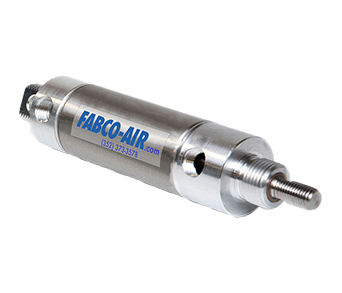Air-powered actuators have a crucial role in a variety of commercial applications, converting pressurized air into kinetic action to regulate the operation of equipment and devices. These systems are critical for streamlining processes, providing high-performing and reliable performance in environments where speed and accuracy are paramount. However, relying solely on automated systems can at times lead to problems, especially during unexpected breakdowns or maintenance events. This is where the concept of a manual override becomes crucial.
Integrating a human override with pneumatic actuators ensures that operators have authority even if automated systems face challenges. This synergy offers a safety net, allowing for manual control to maintain operation and avoid downtime. Whether it be for emergency situations or regular adjustments, a pneumatic actuator with manual override fuses the best of two worlds, providing flexibility and peace of mind in various manufacturing settings.
Understanding Gas Devices
Air devices are instruments that convert compressed gas into the form of physical motion. They serve a vital role in various industrial uses, controlling the actions of valves, pistons, and additional machinery. With the power of pressurized air, such devices deliver trustworthy and high-performance methods of automation, making them essential in production, processing, and handling tasks.
The operation of a pneumatic actuator typically involves a membrane or cylinder which translates in reaction to variations in gas tension. As gas is fed into the device, it generates a force that moves the actuator's internal parts, allowing it to perform tasks such as unsealing or sealing valves. This quick response time and capability to generate significant force make pneumatic devices ideal for applications that necessitate rapid and exact shifts.
In addition to their effectiveness, pneumatic devices can be constructed with hand-operated interventions to maintain working oversight in multiple conditions. pneumatic/manual actuator combination enables operators to assume explicit authority of the actuator's action, that is notably crucial in emergencies or when automatic control systems break down. This combination of pneumatic operation and hand management improves the overall dependability and flexibility of industrial mechanisms.
Significance of Manual Control
Manual controls are essential in systems that use pneumatic actuators as they offer a fail-safe method for controlling the equipment in the instance of an accident or outage. When automatic systems encounter a malfunction or when external conditions cause them inoperable, having the ability to intervene ensures that operators can retain control. This ability is crucial in industrial environments where security and continuous operation are critical.

Additionally, manual overrides enhance the adaptability of pneumatic systems. Operators can readily change settings or control the actuator by hand without depending entirely on automated processes. This versatility is particularly advantageous during service or fault-finding, allowing for rapid adjustments and helping technicians to pinpoint issues more efficiently. The manual option enables operators to step in when necessary, maintaining productivity and mitigating potential delays.
Furthermore, incorporating human controls into pneumatic actuators promotes a greater sense of control and confidence among operators. Knowing they have the choice to manually override mechanical systems helps reduce anxiety in high-stakes environments. It cultivates a culture of proactive security, as staff feel more equipped to handle unexpected situations and can respond promptly to avert accidents or equipment failures. The existence of a manual override not only boosts operational reliability but also instills a sense of ownership among the workforce.
Implementations and Advantages
Air-powered actuators with manual overrides are commonly used in sectors including production, food production, and pharmaceuticals. In automated control systems, these actuators provide the precision and reliability essential to manage various processes, ranging from basic valves functioning to complex machinery actions. The inclusion of a manual control feature enables users to readily intervene in cases where automated processes may malfunction or require adjustments, ensuring continuous operation and reducing downtime.
One of the major benefits of utilizing air-powered actuators with hand overrides is improved safety. In high-stakes settings where automated controls may create hazardous situations, the ability to by hand control the actuator provides an additional layer of security. Users can swiftly take charge during crises or system failures, ensuring that operations can be stopped or adjusted to prevent accidents. This dual functionality fosters a safer working environment while preserving efficiency.
Moreover, these devices offer notable flexibility in operations. With the manual control capability, users can make immediate changes based on changing circumstances or specific requirements. This flexibility is particularly advantageous in fluid environments where processes need to be modified swiftly. As a consequence, companies can improve productivity while retaining control over own systems, resulting in greater operational efficiency and flexibility.
